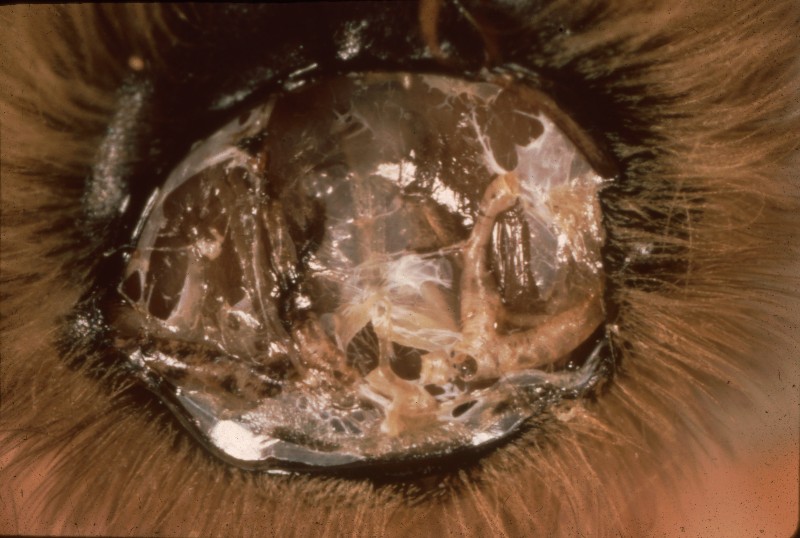
Tracheal mite infection is not usually a serious disease in the UK with small numbers of colonies being affected.
Acarapisosis is an infestation of the breathing tubes (trachea) of an adult bee by the parasitic mite Acarapis woodi.
In the honey bee, oxygen is delivered to body tissues via diffusion through the trachea and air sacs. The trachea is where these acarine mites reproduce and feed. The mature female mites enter young bees via the anterior thoracic spiracles; bees are only susceptible to infestation in the first nine days after they emerge. The mites lay their eggs in the trachea and when hatched the larvae begin to feed on the haemolymph (blood) of the bee.
Bees clustering in front of the hive appearing confused and disorientated, seeming unable to return to the hive, is a strong indicator of Acarapisosis. Sometimes the row of hooks that connect the front wings of the bee to the rear ones become detached, causing an appearance known as ‘K-wing’; however this could be due to another ailment.

Infestations can shorten the lifespan of over-wintering bees leading to ‘spring dwindling’ as the bees die early in the spring. The expanding brood cannot be supported sufficiently by the remaining adult population, and the colony will die.
Dissection and microscopic examination of the primary trachea is the only real way of diagnosing this condition. A healthy bee’s trachea will have a uniform, creamy-white appearance.

Infested trachea show patchy discolouration or dark staining.
Images Courtesy The Animal and Plant Health Agency (APHA), Crown Copyright
The current thinking is that the best method of control is to re-queen colonies that are susceptible to the disease.
